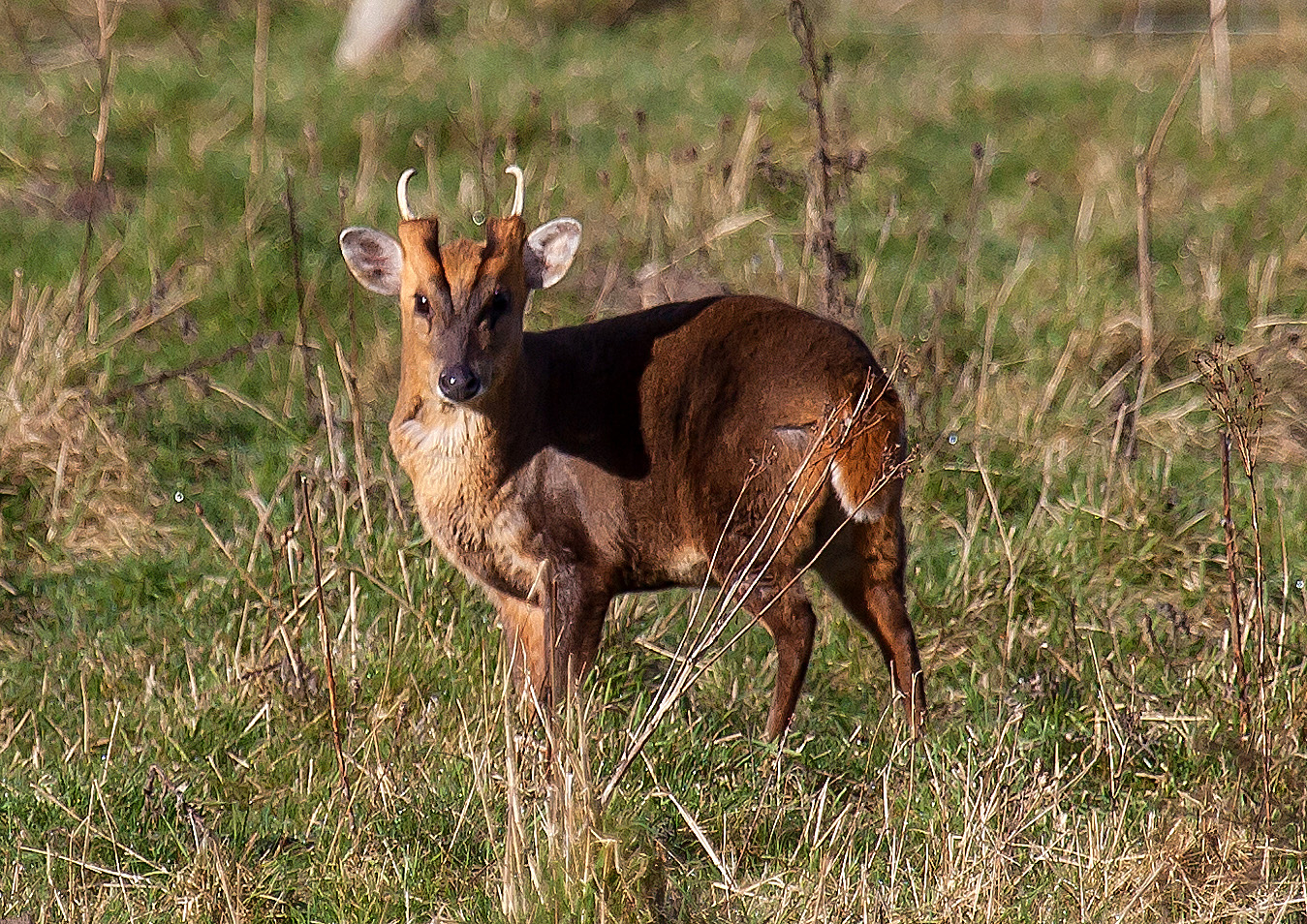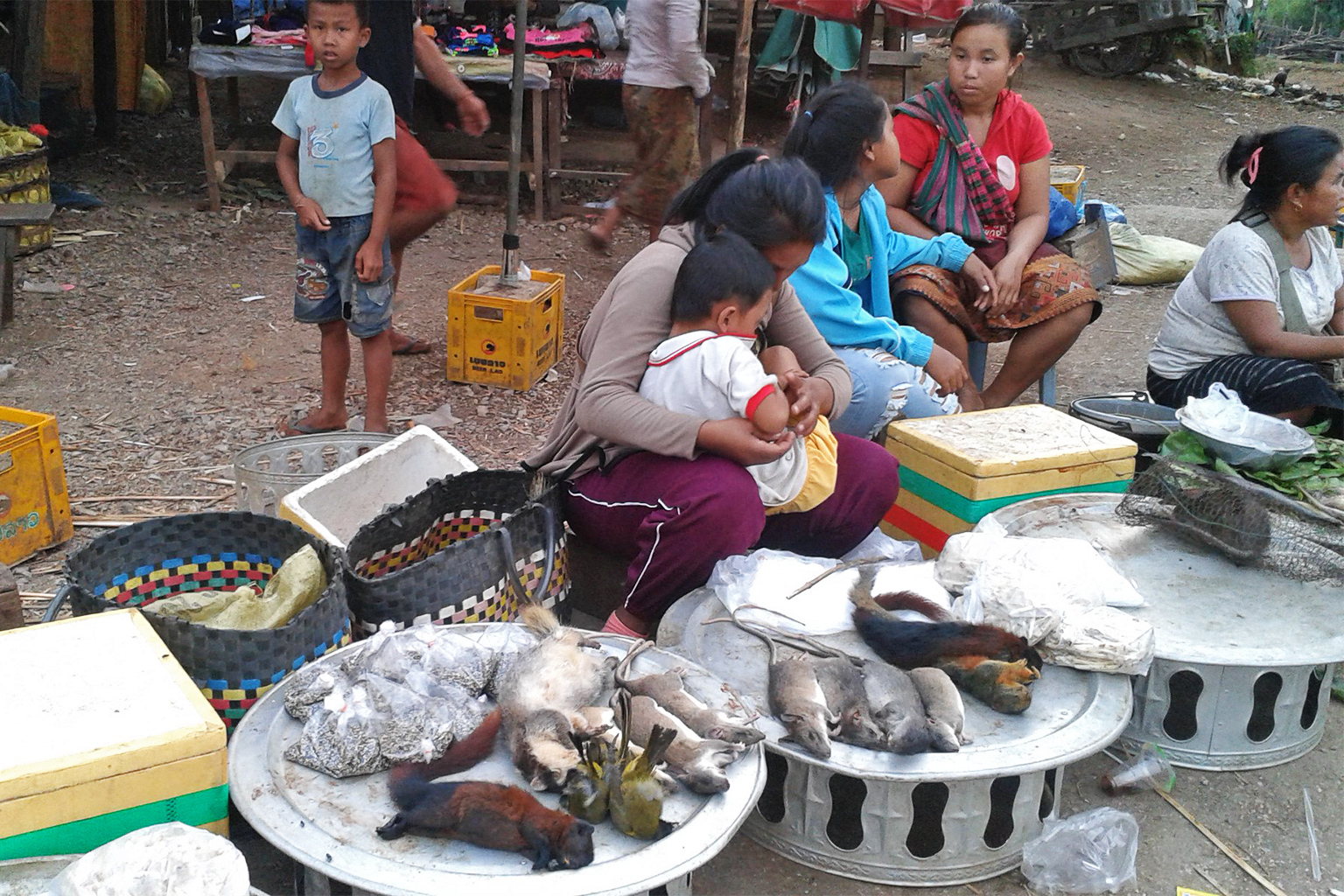- The wildlife origins of COVID-19 highlighted the risks of intruding into forests and consuming wildlife, but most discussions around the pandemic have focused on human health and wildlife conservation.
- A recent study investigated how the pandemic impacted hunting communities in Southeast Asia, a hotspot for wildlife hunting and trafficking.
- The results show that while there was a decrease in the wildlife trade as international borders were closed and people’s movements restricted, there was an increase in forest visits and hunting in these communities due to job losses and increasing prices of goods.
- The researchers suggest that to conserve wildlife in the region and rein in hunting, authorities need to work with hunting communities and support sustainable alternative livelihoods.
The COVID-19 pandemic, which began spreading in a seafood and poultry market in Wuhan, China, shone a spotlight on zoonotic diseases and the risks that markets selling wild meat can pose to human health. Following the outbreak, some countries like China temporarily closed down wet markets, while others like Vietnam banned the wildlife trade outright. A WWF survey found that the overall consumption of wildlife dropped by 30% in Southeast Asia and the U.S.
On the surface, the pandemic may seem to have deterred people from consumption and trade of wildlife due to restrictions and awareness about zoonoses. However, a new study published in the journal Conservation Science and Practice reveals a more complex picture. The study, part of a bigger livelihood survey of hunting communities in Vietnam, Cambodia and Laos, interviewed hunters living near protected areas to understand how COVID-19 has impacted their livelihoods. The survey found that the wildlife trade declined during the pandemic, but hunting and forest visits in protected areas increased to make up for lost jobs and to supplement income.
“The study aims to get a more holistic picture of hunting and trying to put conservation into practice, so we could intervene positively to reduce hunting and also ensure these communities are stable,” says lead author Elizabeth Davis, a researcher at the San Diego Zoo Wildlife Alliance.


Across Southeast Asia, wildlife trafficking is estimated to be worth $8 billion to $10 billion annually, and hunting is now the biggest threat to many species. “In Cambodia, hunting is very widespread,” says conservation social scientist Emiel de Lange of the Wildlife Conservation Society, Cambodia. “This comes from the long history people have where other food can be scarce and where wildlife is an important source of food and especially meat.”
Many communities in the region hunt incidentally, killing wild animals like deer, mongoose, squirrels, rabbits, bush pigs or muntjacs when they encounter them in the forest, or setting traps around their fields to protect crops. A smaller number of hunters go into forests targeting wildlife like pangolins, bears or porcupines that are exported for their purported medicinal values. “But it’s not as common as incidental hunting,” says de Lange, who was not involved in the recent study.
The study interviewed 109 male hunters from 62 villages near protected areas in Vietnam, Cambodia and Laos. It asked hunters about how the pandemic had impacted their communities and livelihood.
The researchers found that, overall, COVID-19 caused a negative economic impact in these communities in all three countries. People lost their city-based jobs, factories were closed due to lockdowns, the prices of essential goods shot up, wildlife trading was restricted, and international borders were closed.
In Vietnam, where COVID-19 case counts were the highest of the three countries, widespread lockdowns in cities meant closure of factories that employed many rural migrants. As a result, these migrants moved back to their villages and ventured into forests to hunt or procure food for subsistence. Nearly half of the survey respondents (42%) noted an increase in hunting, while two-thirds (64%) observed a dip in the local wildlife trade.
About half (49%) of the hunters in Laos identified increase of goods prices and barriers in transportation as the biggest impacts of the pandemic. A fifth of the respondents there said they weren’t impacted in any way as they continued to hunt and sell wildlife locally. “I was just astonished at the fact that a country could close its international borders and do that for many months and have comparatively little impact on these communities,” Davis says.

In Cambodia, which did not report any community transmissions until about a year into the pandemic due to strict lockdowns, nearly a fifth (17%) of the respondents noted that wildlife traders, who otherwise frequented rural communities to supply markets in Phnom Penh, a hub of the wildlife trade due to its connectivity, stopped coming to buy their catch. “Access to markets became a lot more difficult,” says de Lange, who observed similar trends in the country with anecdotal evidence. A fifth of the surveyed hunters also mentioned that while the prices of goods had generally risen, wildlife prices had fallen during the pandemic.
Although the pandemic has now eased in these countries, the economic instability linked to increased hunting has continued. “The economy still has not returned to where it was previously,” says de Lange of post-pandemic Cambodia, adding that many of those who were previously employed haven’t yet been able to return to their jobs or find new ones.
While Davis acknowledges that the findings of the study are limited to a very small sample size and based on just one survey question that doesn’t capture the different perspectives on hunting, she says it has broader conservation implications as economic necessities are driving forces of hunting in the region.
“If people don’t have these livelihoods, and you are throwing a lot of enforcement at the [hunting] issue, then you have these people who can’t eat, can’t support their families, and are also being penalized,” she says. “It’s a very hard issue to deal with.”
Instead of enforcing various laws on hunting, Davis and de Lange suggest governments work with hunting communities to understand how best they can help them to find other sustainable livelihoods.
“I think it’s a really tricky, tricky question,” Davis says, adding that we need solutions that “can creatively think about these historic practices and the bounty of forests and translate that into sustainability in terms of livelihood and conservation.”
Banner image: A Sunda pangolin. Some hunters go into forests targeting wildlife like pangolins, bears or porcupines that are exported for their purported medicinal values. Image by Frendi Apen Irawan via Wikimedia Commons (CC BY-SA 4.0).
Citations:
Davis, E. O., Castaneda, M., Crudge, B., Lim, T., Roth, V., Glikman, J. A., & Cao, T. (2023). Perceptions of the COVID‐19 pandemic’s impact on communities and wildlife trade: Preliminary qualitative analysis from hunters in Vietnam, Cambodia, and Laos. Conservation Science and Practice, 5(3). doi:10.1111/csp2.12892
Worobey, M., Levy, J. I., Malpica Serrano, L., Crits-Christoph, A., Pekar, J. E., Goldstein, S. A., … Andersen, K. G. (2022). The Huanan seafood wholesale market in Wuhan was the early epicenter of the COVID-19 pandemic. Science, 377(6609), 951-959. doi:10.1126/science.abp8715
FEEDBACK: Use this form to send a message to the author of this post. If you want to post a public comment, you can do that at the bottom of the page.
